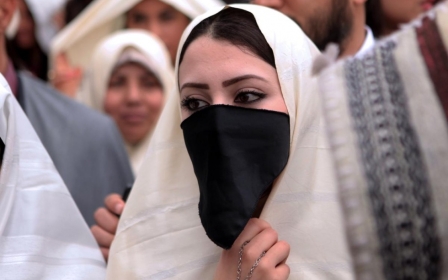American Salafi: US Supreme Court Judge Antonin Scalia

On 13 February, 79-year-old Antonin Scalia, the prominent US Supreme Court judge, passed away. Scalia was a conservative judge. In fact he was one of the most conservative judges in America. However, this did not bar hundreds of Americans from diverse backgrounds and social circles to queue in a long line to have a final look at his body. One of those waiting in the queue said that Judge Scalia was as far to the right as I am far to the left, but this was not the issue because he was an American icon.
On the other side of the political fence, the Democratic president, Barak Obama, and his wife were also among the queue of mourners. Vice President Joe Biden and his wife joined the prayers held for the judge on the following day, Sunday 21 February.
Within the week of his death being announced, every newspaper on both sides of the Atlantic, of all political trends, published reports and eulogies of the American judge. Some expressed admiration and appreciation while others wrote critical accounts. Yet all, without exception, agreed on the significance of Scalia and his considerable impact in the debate, both academic and public, about law and political sociology as well as about the US Supreme Court’s vision of the relationship between the law and the constitution.
In one way, Scalia’s death generates what could be called a political crisis in the United States between the Democrats, or the liberals, and the Republicans, or the conservatives.
The Supreme Court consists of nine judges who are usually appointed by the president and endorsed by the Senate. The endorsement process is political par excellence. The moment the appointment is endorsed, the judge remains in his position for life, unless of course he or she resigns. Until Scalia's death, the court tilted towards conservativism by five judges to four. This means Obama now has an opportunity to tip the balance in favour of the liberal block inside the court. This is what prompted Republicans to claim that filling Scalia’s seat should wait for the election of a new president. In other words, the appointment of a new judge is being treated as a reflection of the will of the American people as expressed in the presidential elections.
On the other hand, the Democrats argue that nominating a judge to replace the dead one is not just a right but a constitutional duty for the incumbent president. Furthermore, the court should not be left in a state of polarising paralysis between two equal blocks of conservative and liberal judges to the effect of hindering the process of issuing rulings on issues that are of divisive constitutional nature.
The US Supreme Court, which was formed in accordance with a constitutional provision of 1789, is often called the Supreme Constitutional Court. However, it is not just a constitutional court, in the sense that it ensures the compatibility of laws with the constitution and with its interpretation. It also performs the role of a high appeal court, which is the last resort for arbitration. With such a role, the US court combines the highest level of appeal, which in Britain is undertaken by the Supreme Court (since Britain governs without a constitution, and so its system does not include a constitutional court) and in Germany the role is fulfilled by the Constitutional Court when it comes to ruling whether laws are constitutional or not.
Right from the start, the United States of America was born in the late 18th Century as a modern state. Like all systems of governance in modern states, the American state soon imposed its hegemony on the land and the people. Legislation was, and still is, the most important tool used to bolster that hegemony. As in the case of every other modern state, the process of codification was not intensive in the beginning but it accelerated during the 19th and 20th centuries. As socio-politics grew more complex and more diversified, the law steadily crept in, shifting large areas from the private to the public sphere.
With the acceleration of the process of codification, the Supreme Court acquired increasing prominence in American life so much so that it became one of the most important state institutions.
Such prominence lent additional significance to Scalia and to his role in the Supreme Court and his influence in the public sphere. Although Scalia did not occupy the position of court president, many saw the Supreme Court during the past three decades as a “Scalia Court”.
Antonin Scalia was born to Catholic parents of Italian origin. He received his primary education in a Jesuit school in New York. He then went to Georgetown University in Washington, a university that was also founded by the Jesuits. After graduating from Harvard School of Law, he worked as a lawyer for some time. He also worked in the office of President Nixon’s legal advisor and taught law at the universities of Virginia and Chicago. In the mid-1980s, he was appointed an appeal court judge in Washington DC and in 1986 President Reagan nominated him to the Supreme Court.
Scalia was an observing Catholic and just like every other religious Catholic he did not approve of birth control. He had nine sons and daughters out of his marriage. One of his sons grew up to be a Catholic priest. He was the one who performed the rituals when his body was laid in repose at the Supreme Court.
The importance of Scalia did not emanate only from his conservative legal opinions, such as the right of individuals to carry arms, abortions, equal rights for homosexuals and capital punishment. These are the issues that are close to the hearts of the conservatives. The fact is that other judges in the Supreme Court, no less conservative than Scalia, have been known to adopt similar positions toward these issues to his own.
In a case dating back to 1989, Scalia agreed with other Supreme Court judges that burning the American flag falls within the framework of the right to freedom of speech, an opinion that contradicts the position of the conservatives in general on this issue. Scalia’s significance lies in his theoretical approach and his legal methodology in dealing with the American constitution not only as a supreme frame of reference for law making but the sole frame of reference.
Of course, Scalia knew that the American legal culture, including the culture of the constitution drafters, is a Western legal culture. Yet, despite this he did not recognise any other authority in the United States as being worthy of sharing in this frame of reference within the American constitution. From Scalia’s point of view, the judge need not search farther than the constitutional text as intended by its drafters. He also rejected, in what would become known as textualism and originalism, the liberal legal approaches that are underpinned by the spirit of the text and the changing context, of looking into the historic development of laws, considering the constitution a living organism whose texts grow up and may be reinterpreted with the passage of time and changes of context. Once Scalia said: "We govern by the law and not by intentions." He meant the direct meaning of the text.
Such an approach to the constitutional text is from the Islamic point of view a Salafist approach. In fact, it is a radical Salafist approach par excellence. According to Islamic standards, Scalia would be regarded more Salafist than Ibn Taymiyah himself, for instance, who believed in the existence of a relationship between the text and the context and distinguished between the absoluteness of the Quranic text and the relativity of jurisprudential provisions.
This is what arouses considerable debate today about Salafism. Scalia is certainly many folds more extreme than the Islamic Salafist reformists who moulded the culture of Muslims in the 19th and early 20th centuries. In other words, Scalia’s vision expresses the crisis of man, legitimate as well as illegitimate, in dealing with the constituent text and the debate through which all legal cultures have been through while endeavouring to interpret and read the text.
If Scalia imbued all this sanctity on a positivist constitutional text (that has been through 27 amendments so far), perhaps his legacy warrants some humility and understanding on the part of today’s critics of Islamic Salafism, whose views are dominated by ignorance and hastiness when it comes to making judgements.
- Basheer Nafi is a senior research fellow at Al Jazeera Centre for Studies.
The views expressed in this article belong to the author and do not necessarily reflect the editorial policy of Middle East Eye.
Photo: A mourner pays his respects in front of a portrait of US Supreme Court Justice Antonin Scalia during a private visitation in the Great Hall of the Supreme Court in Washington, DC, on 19 February, 2016 (AA).
Middle East Eye propose une couverture et une analyse indépendantes et incomparables du Moyen-Orient, de l’Afrique du Nord et d’autres régions du monde. Pour en savoir plus sur la reprise de ce contenu et les frais qui s’appliquent, veuillez remplir ce formulaire [en anglais]. Pour en savoir plus sur MEE, cliquez ici [en anglais].





